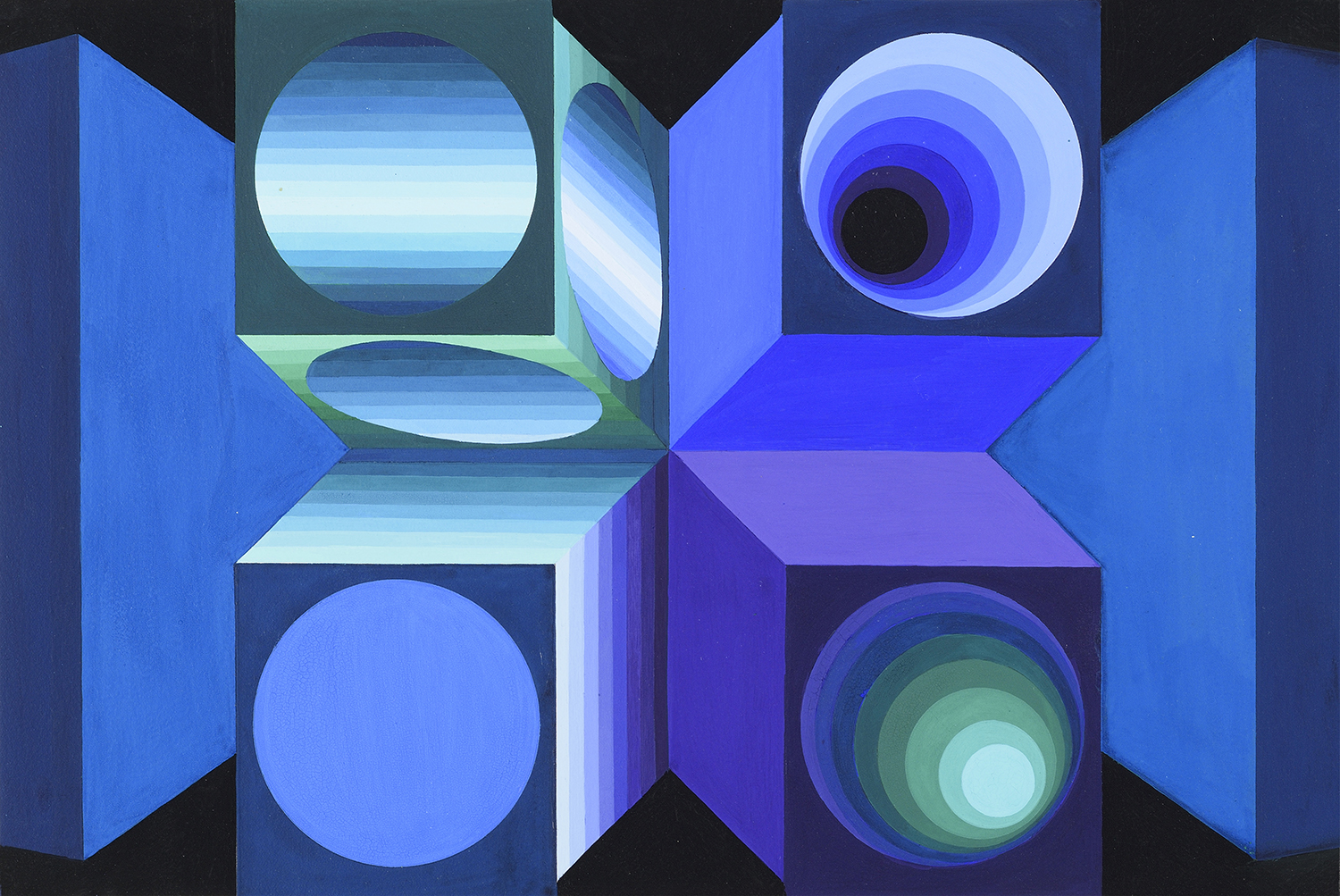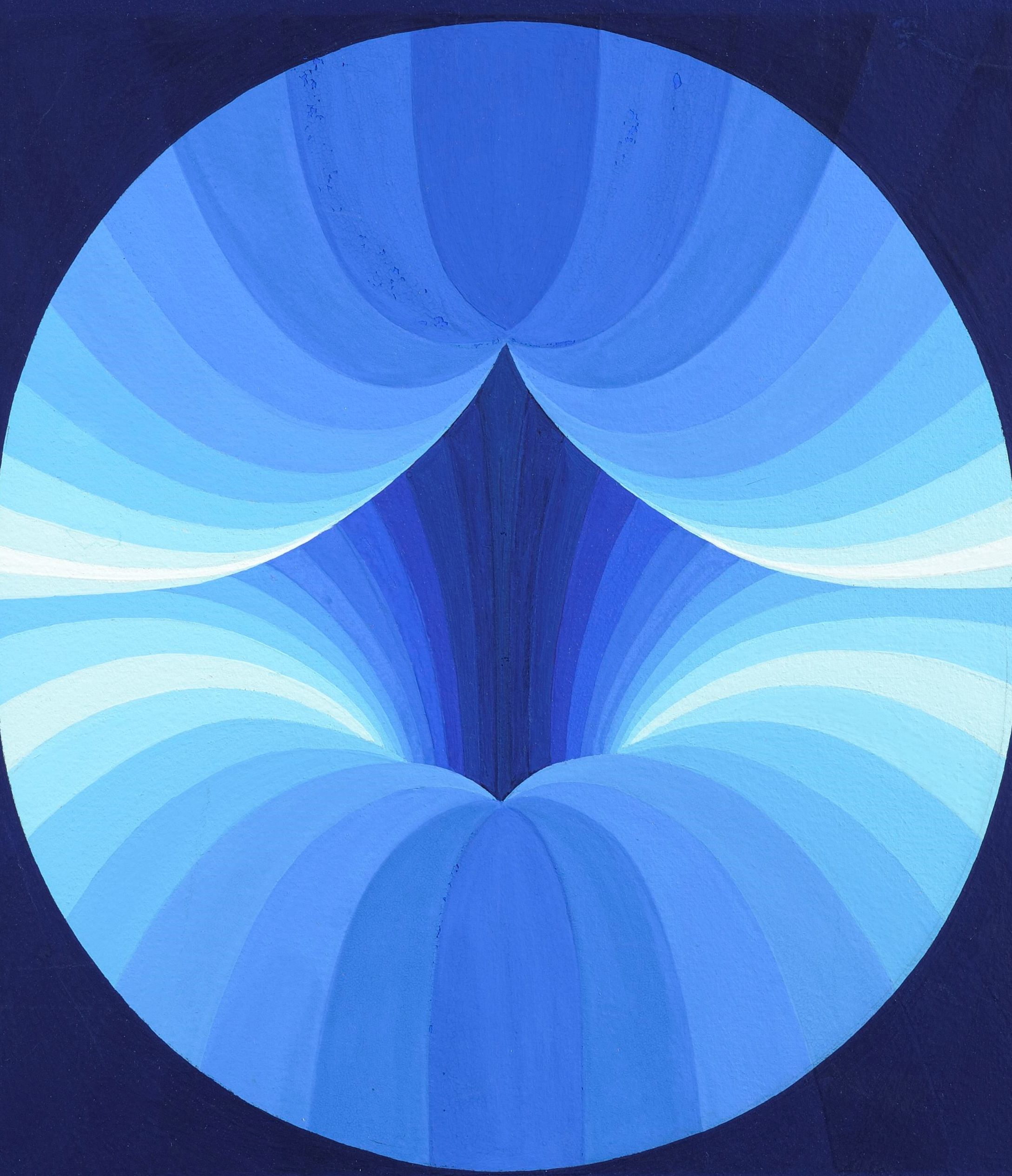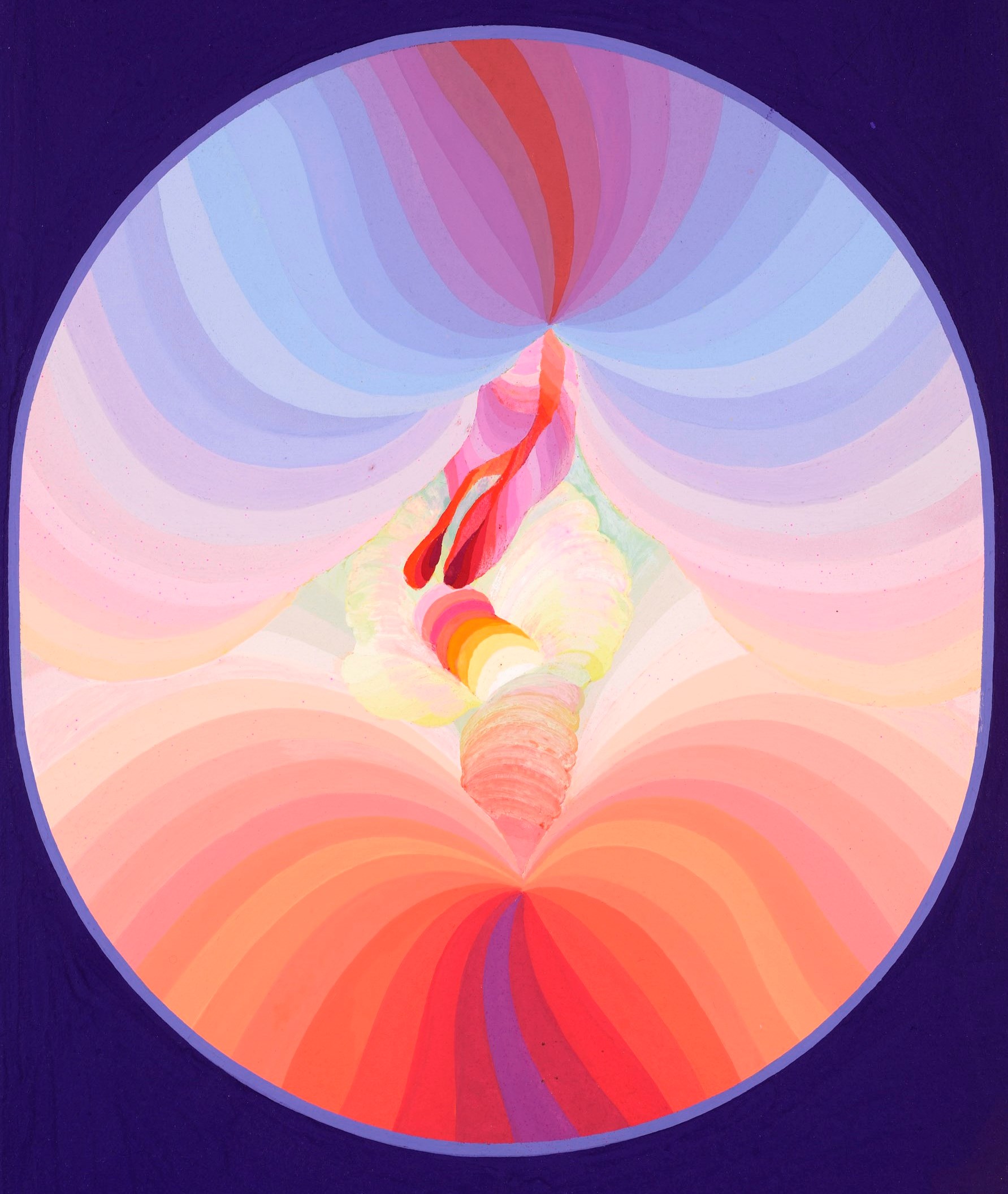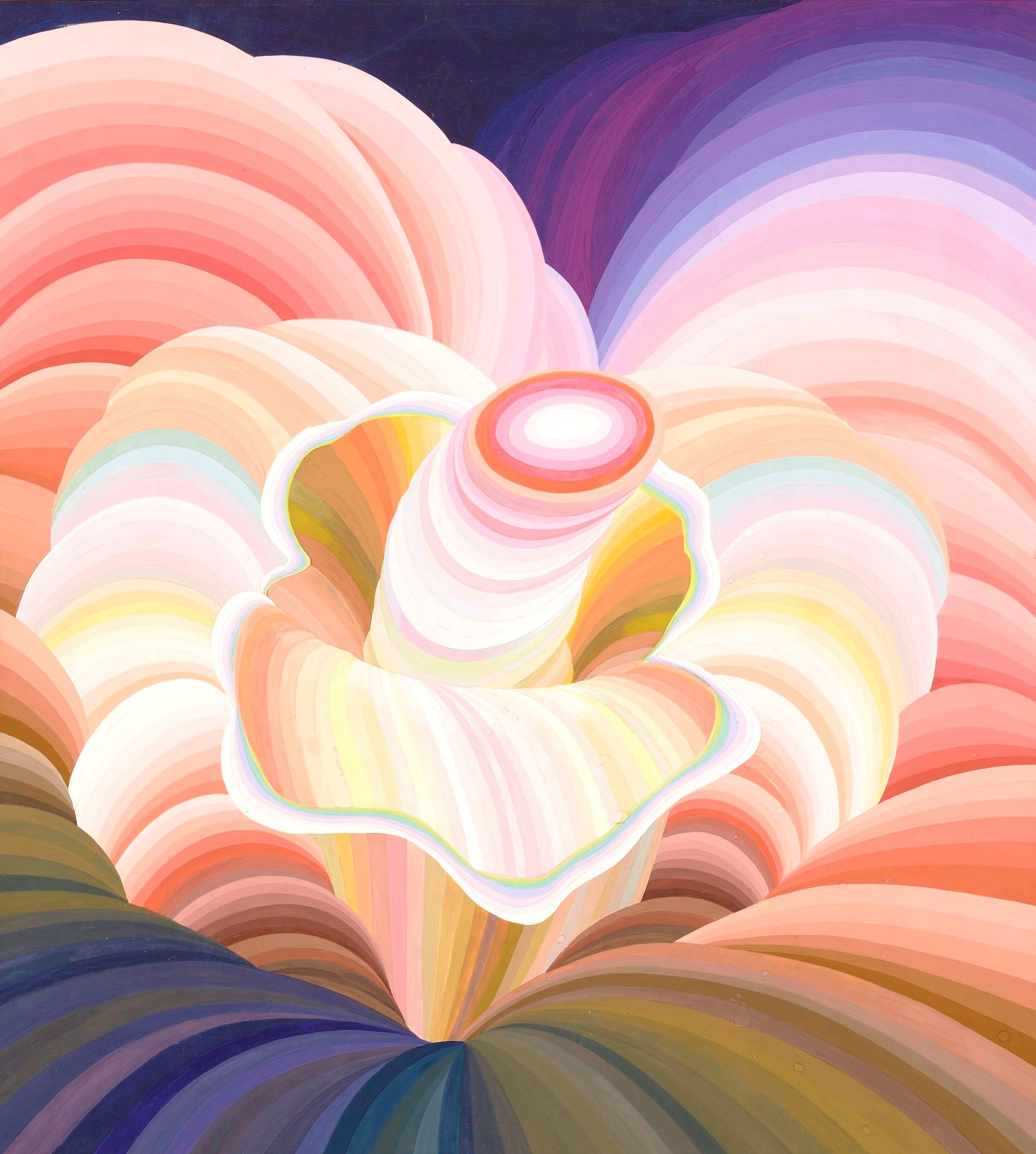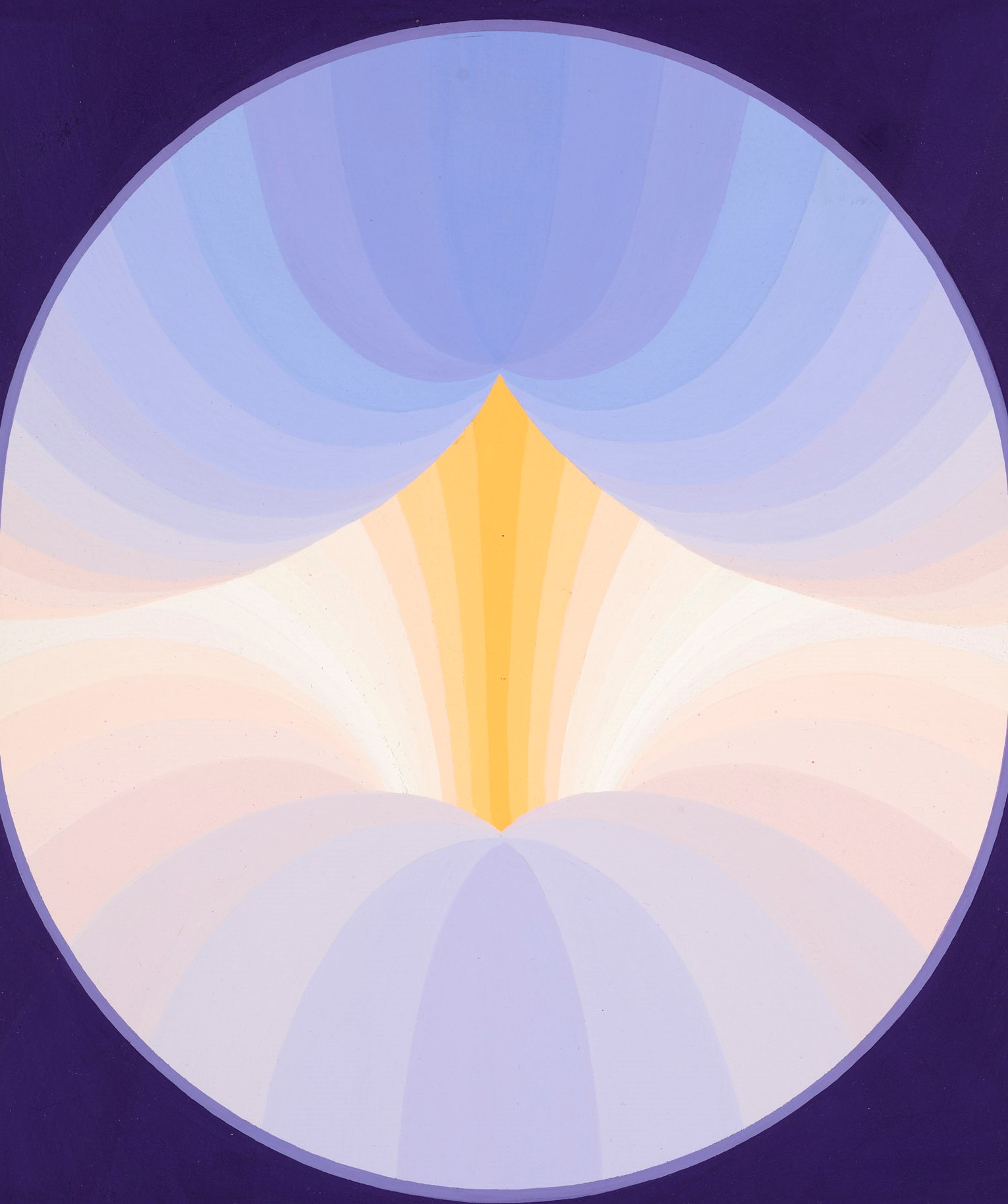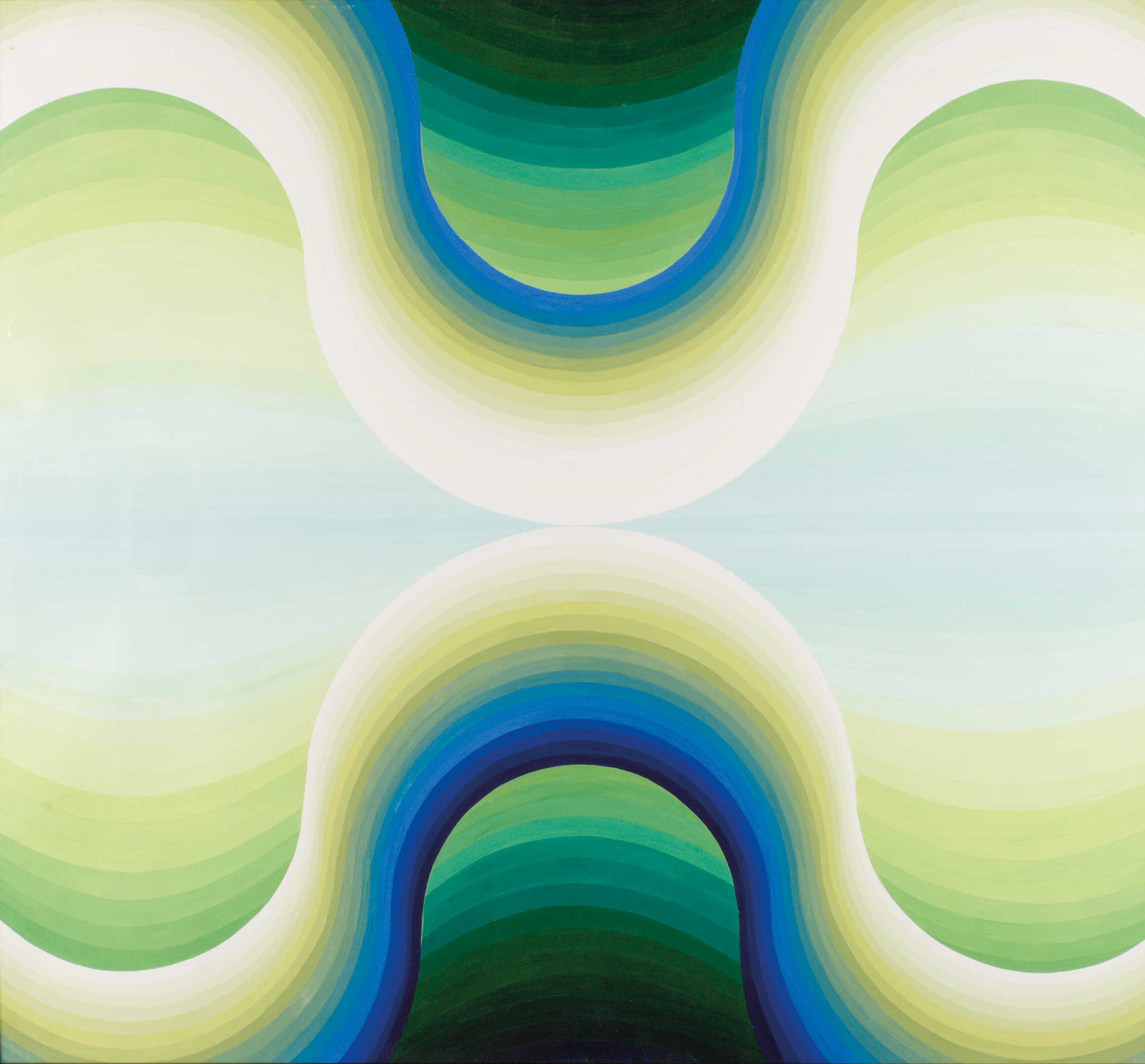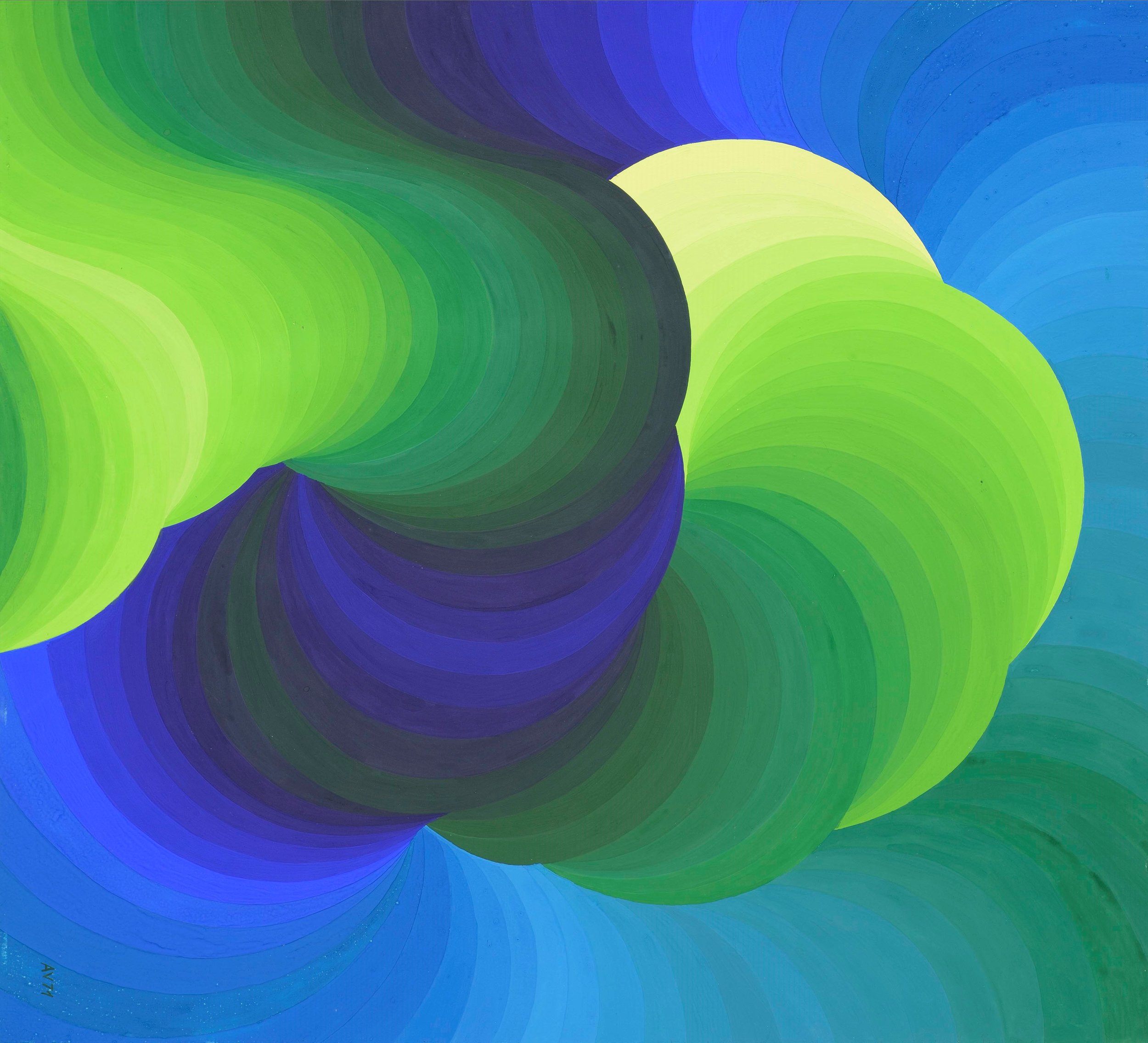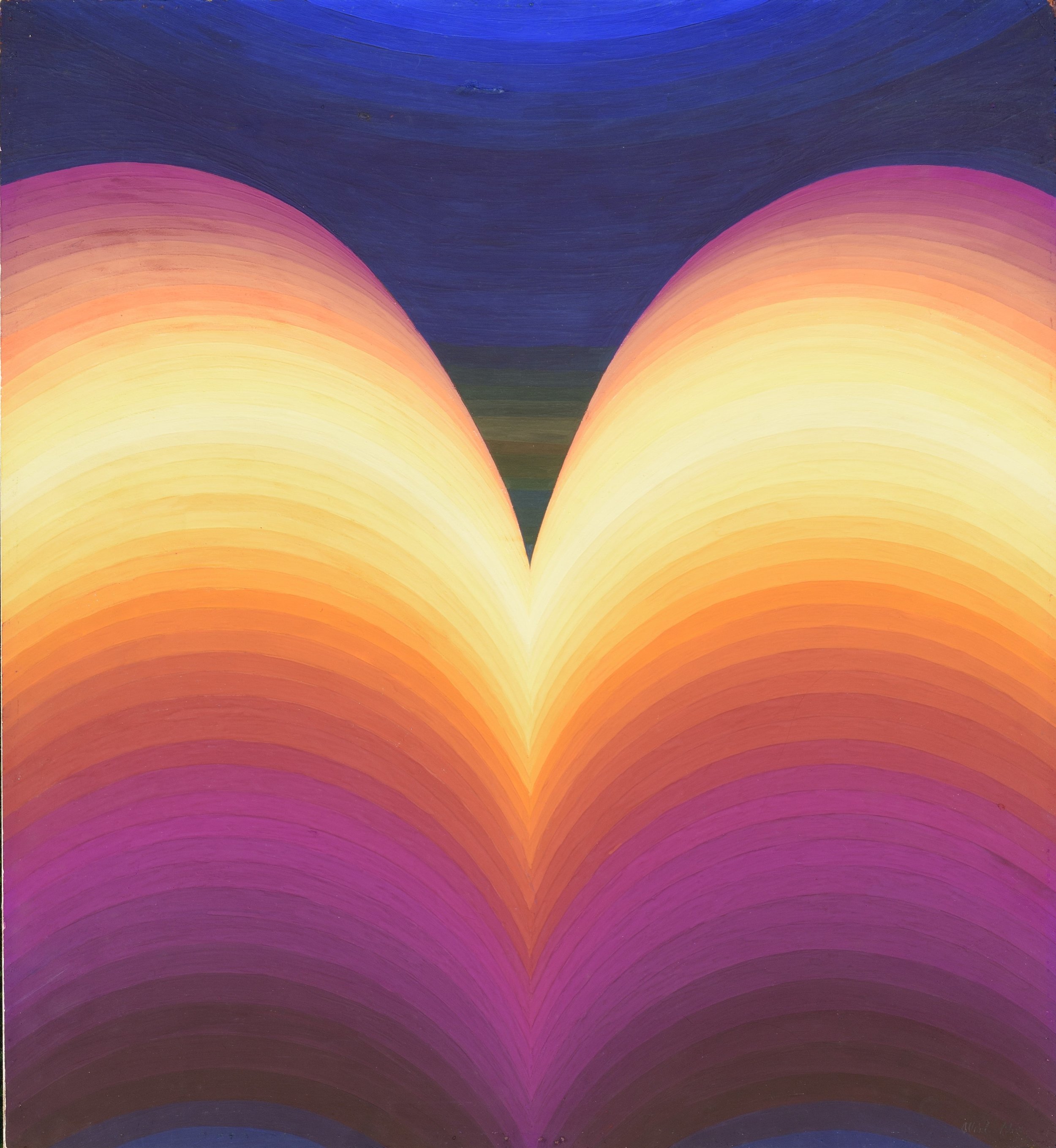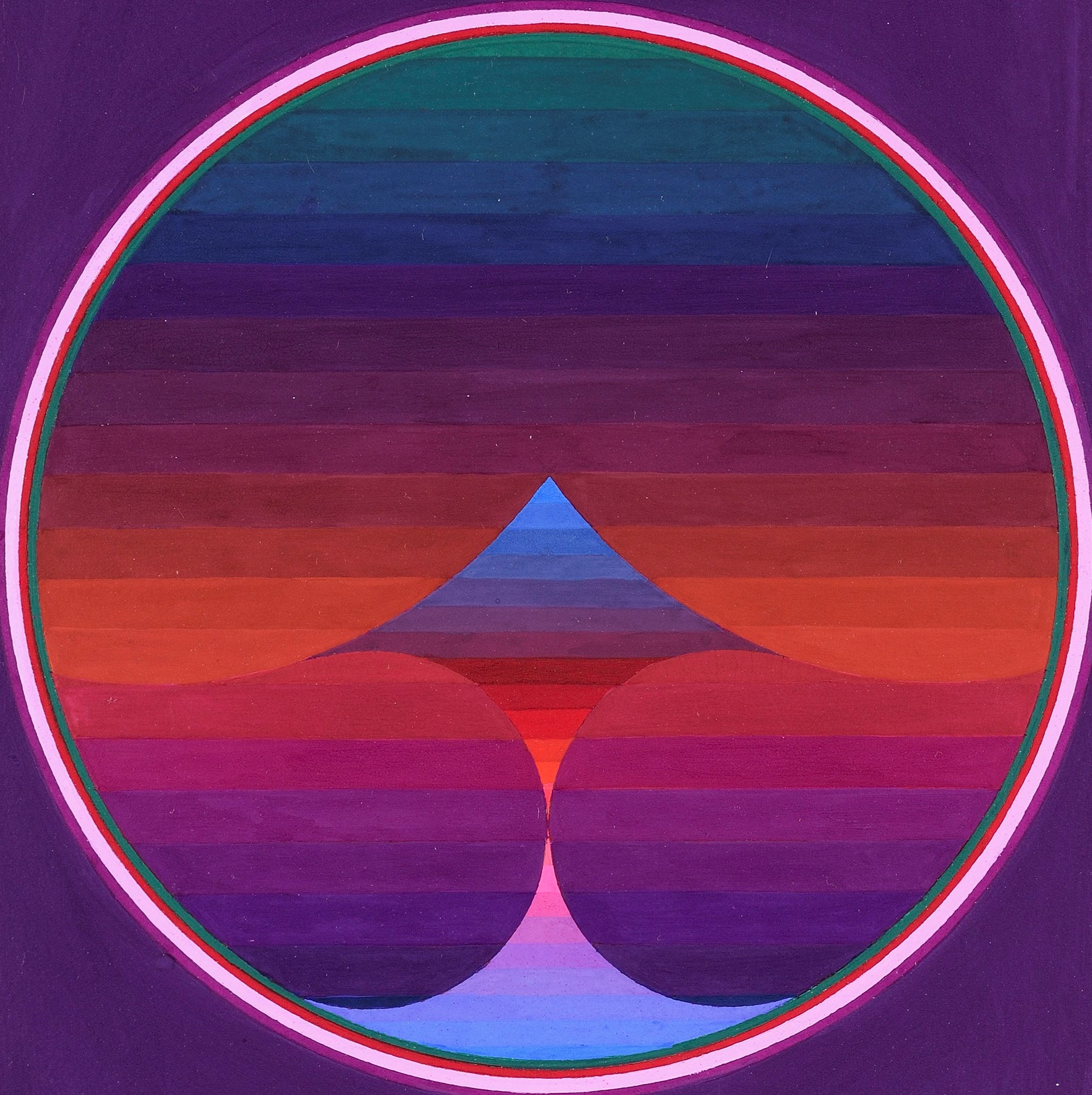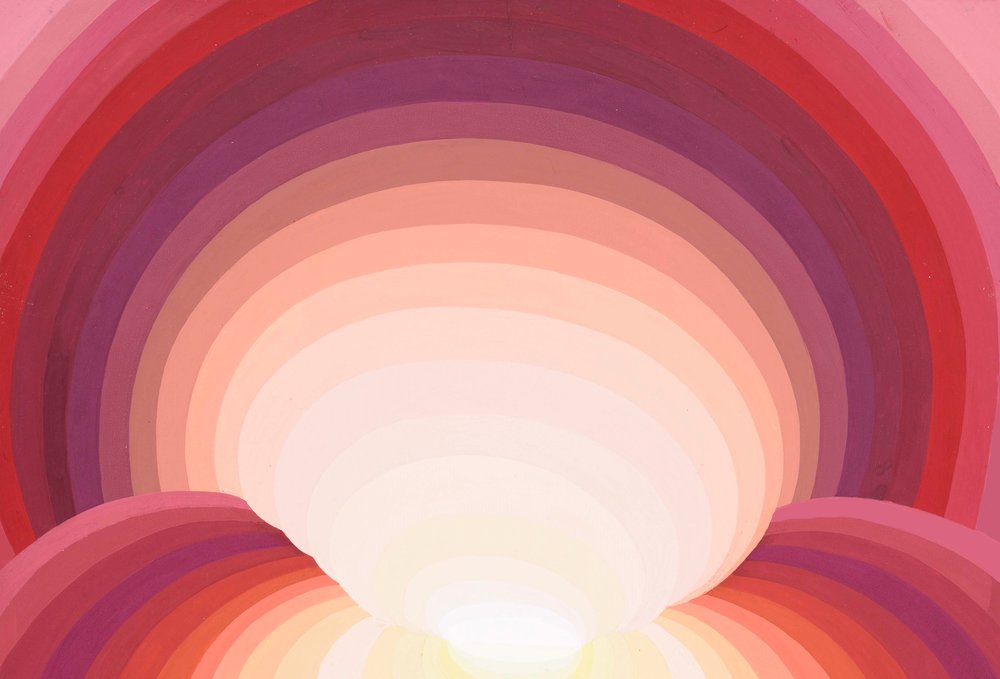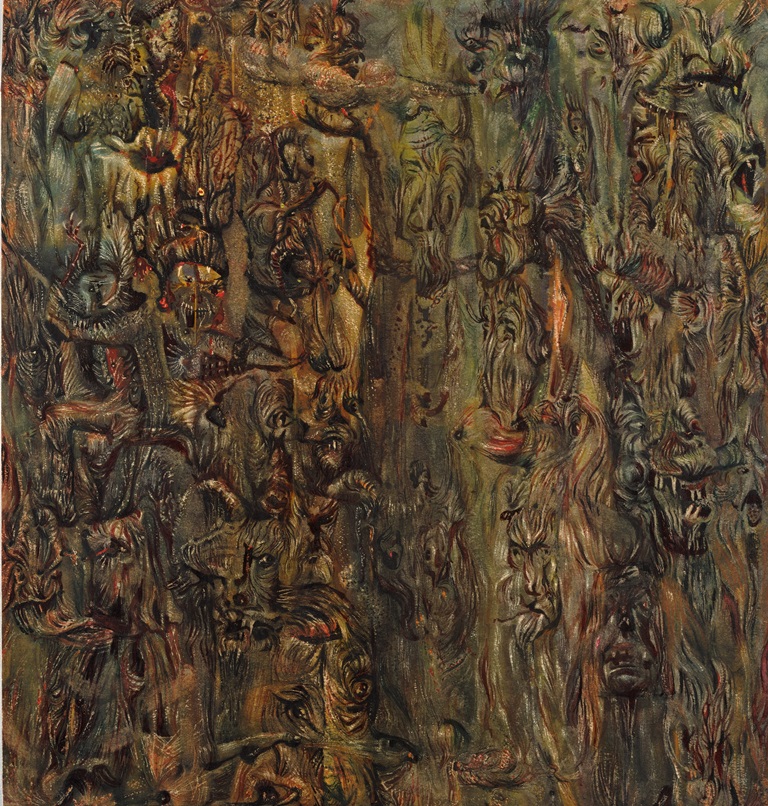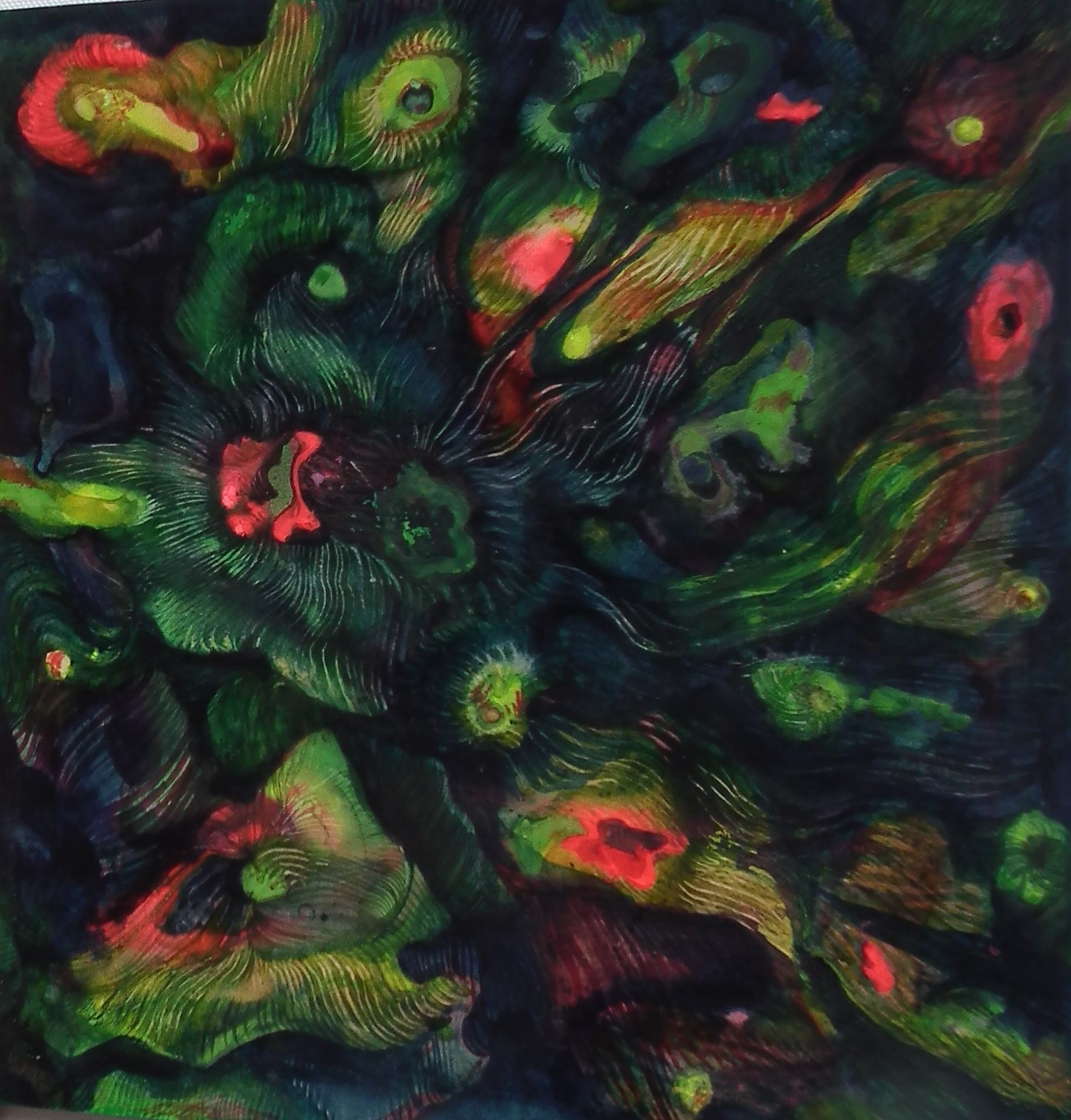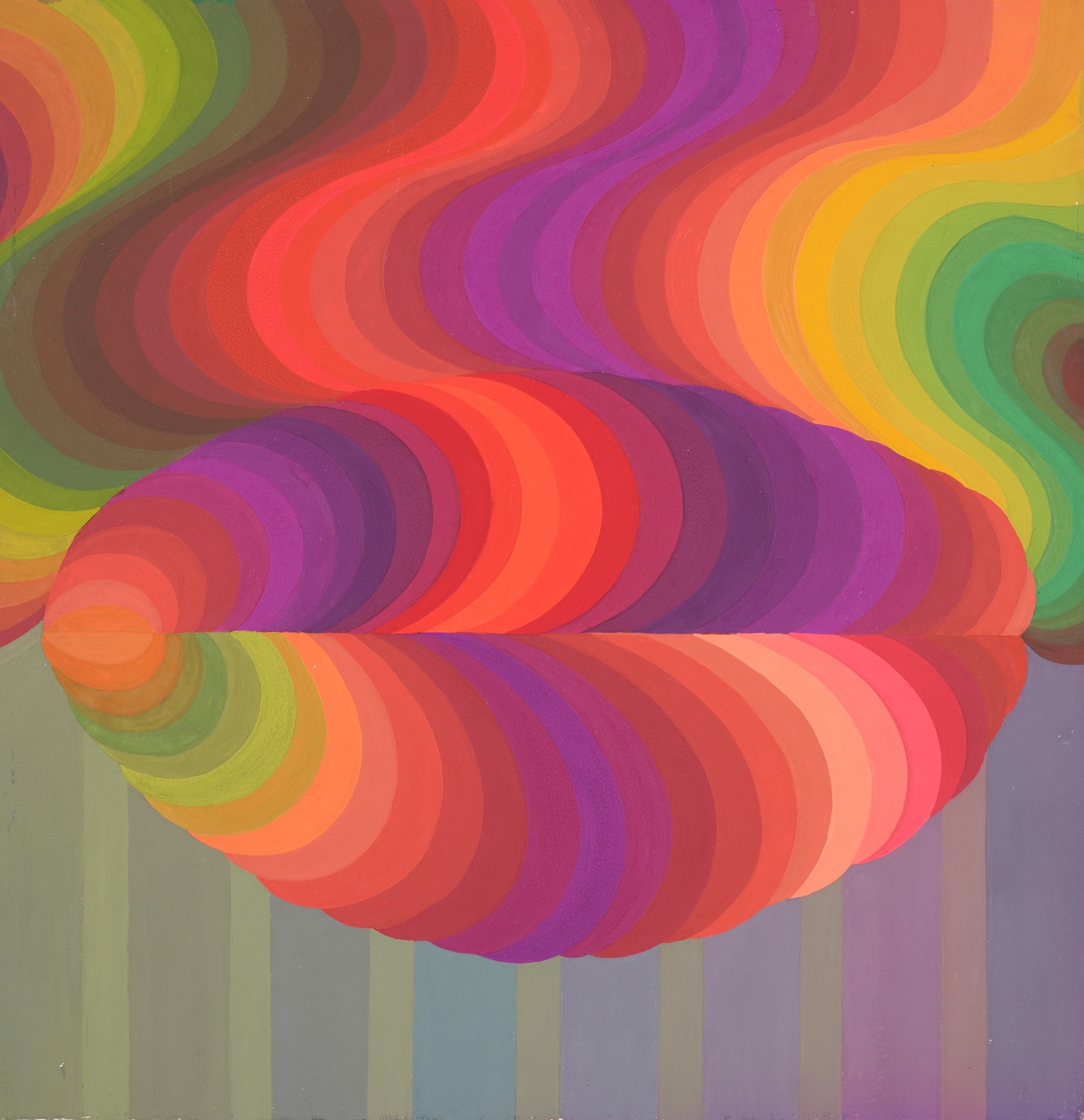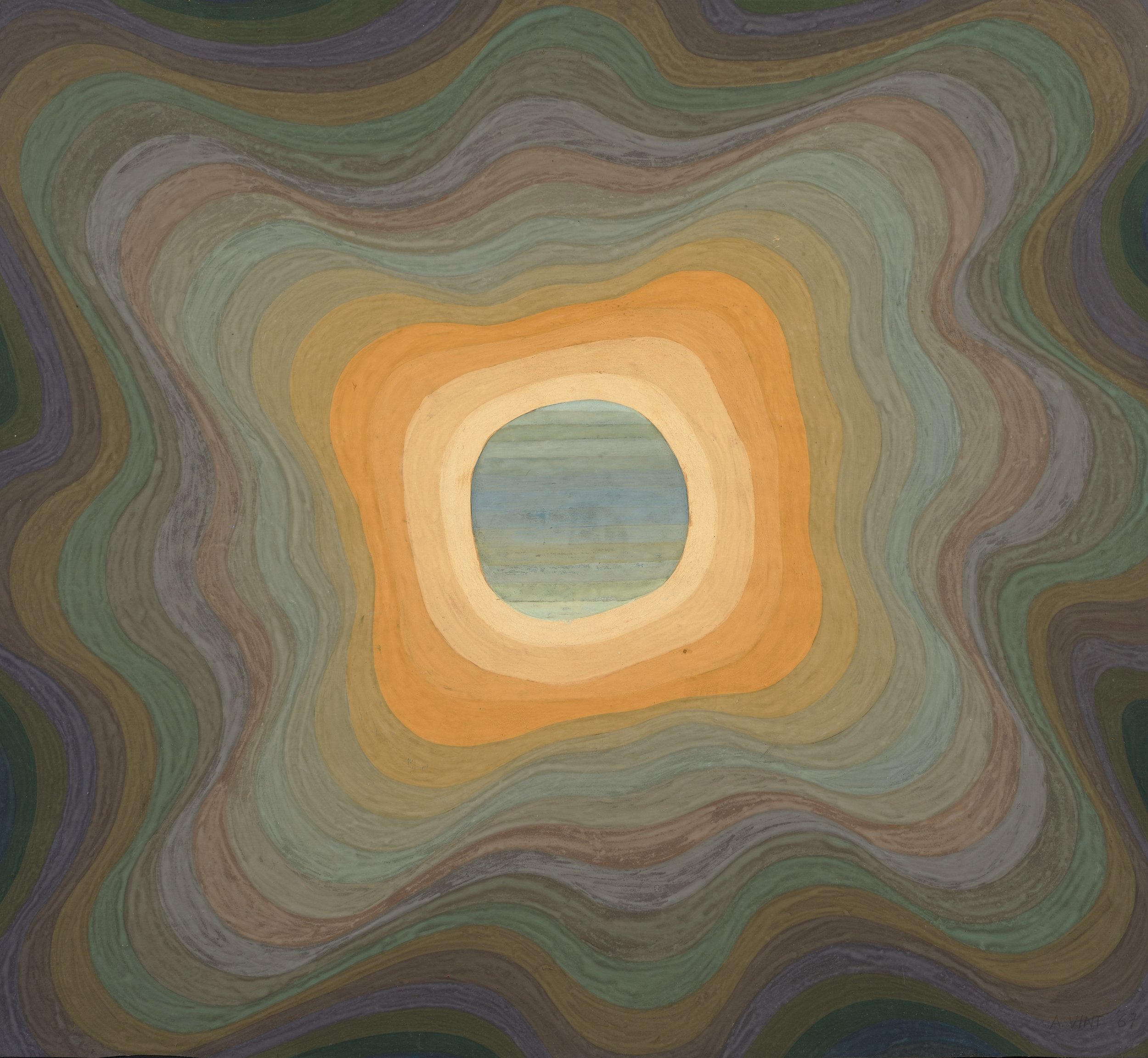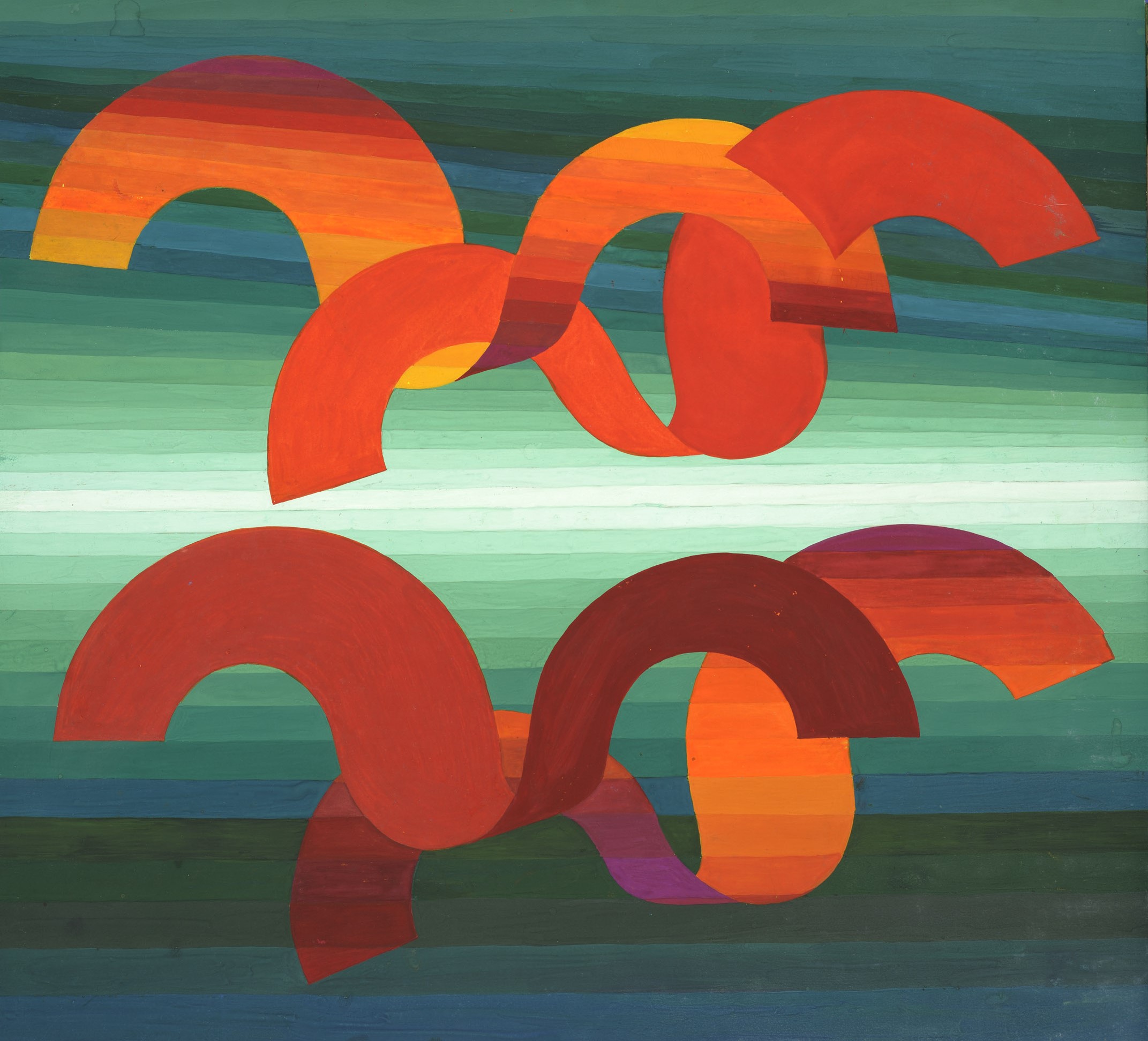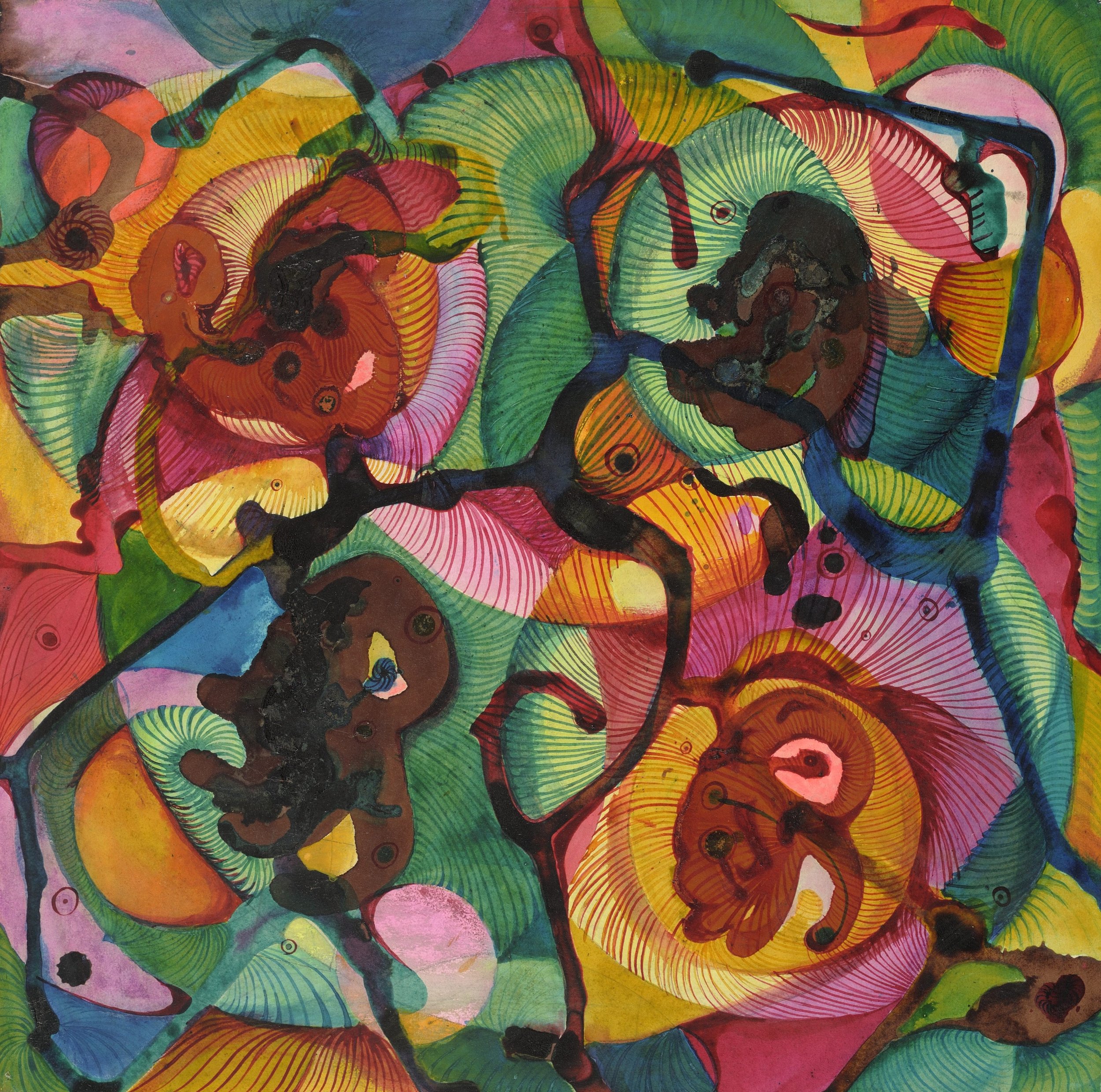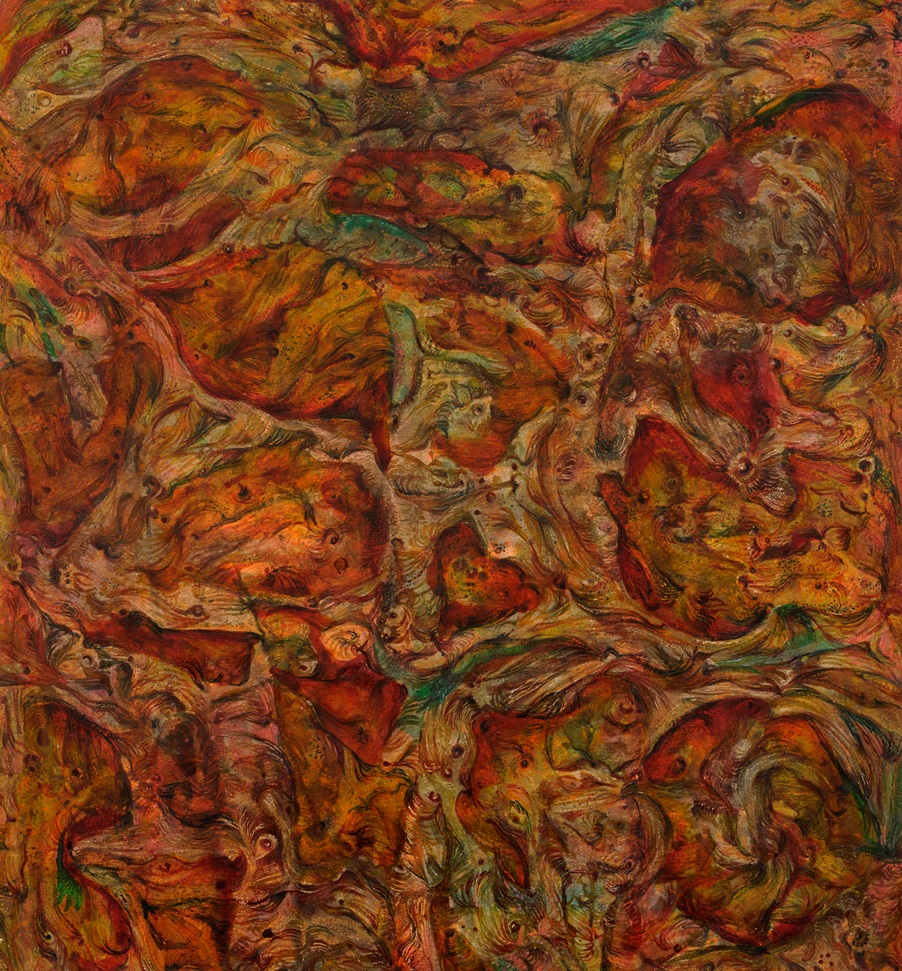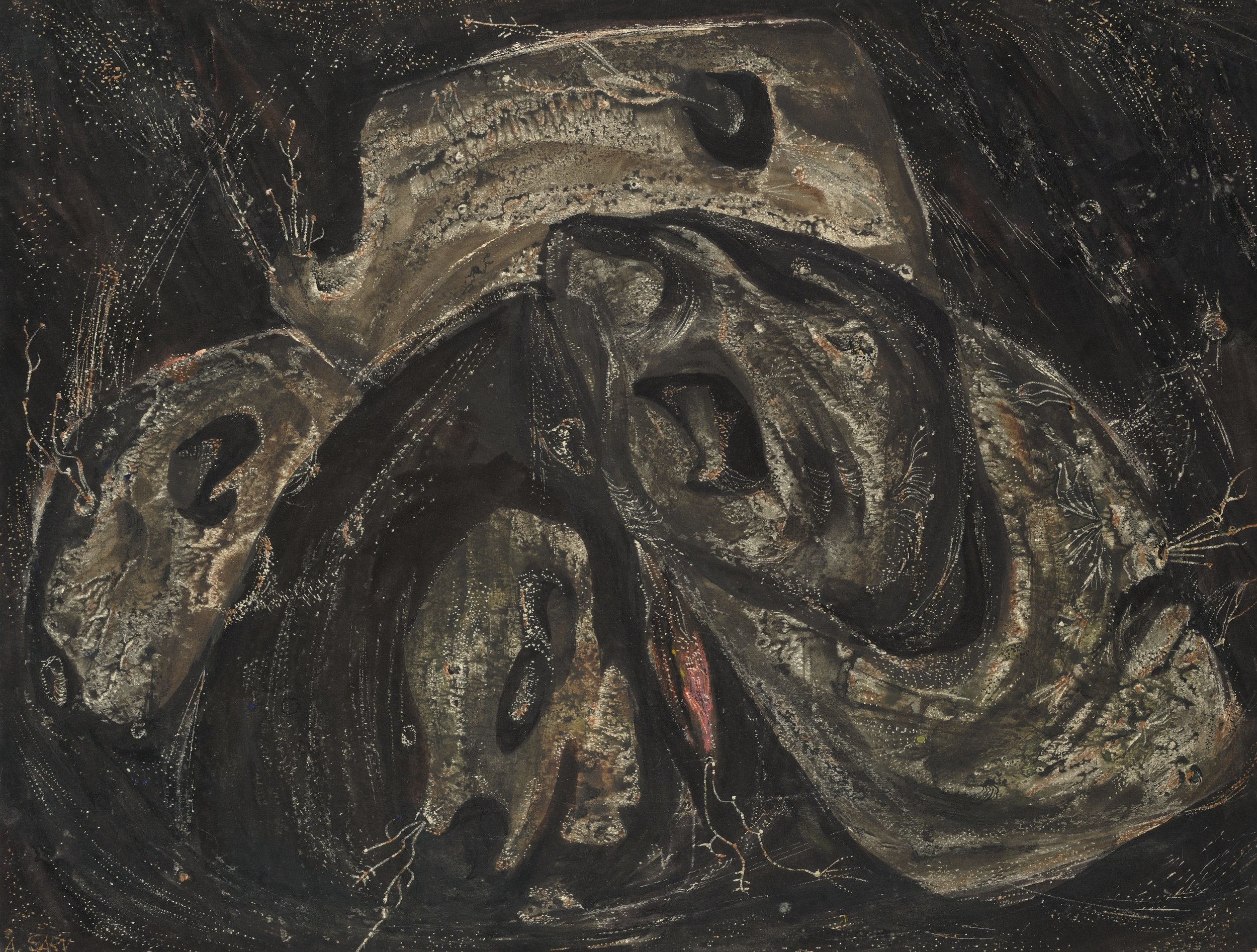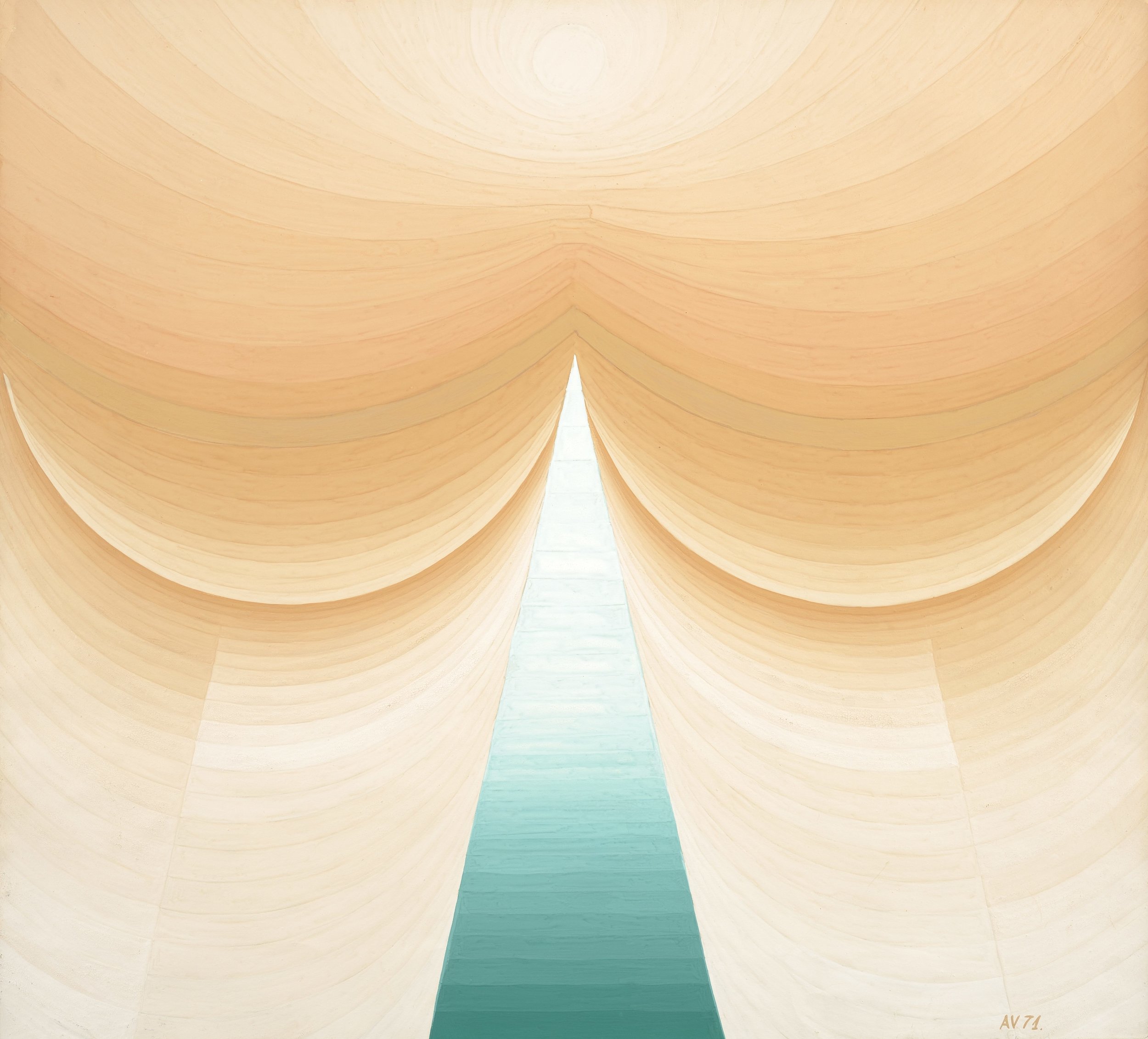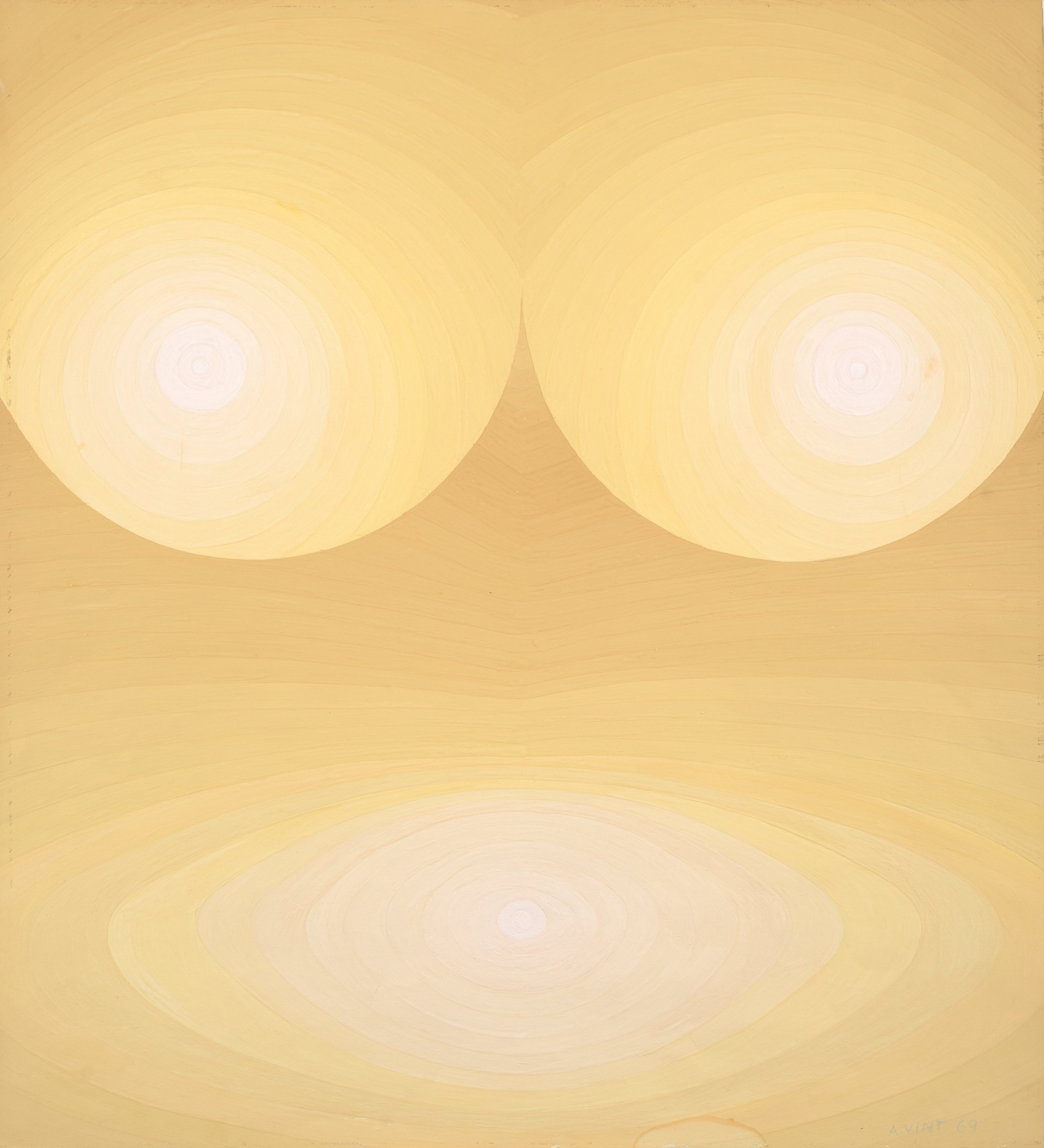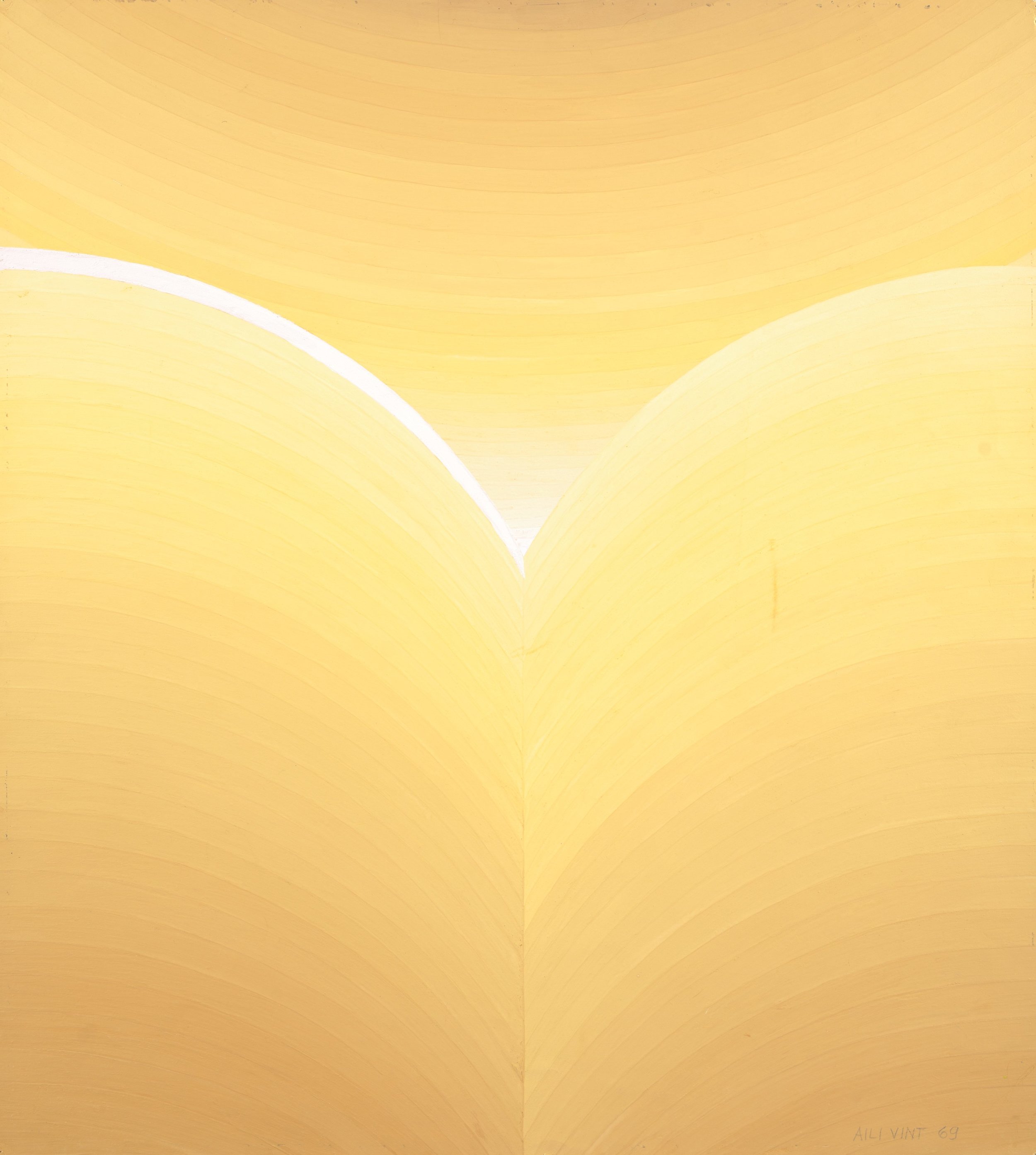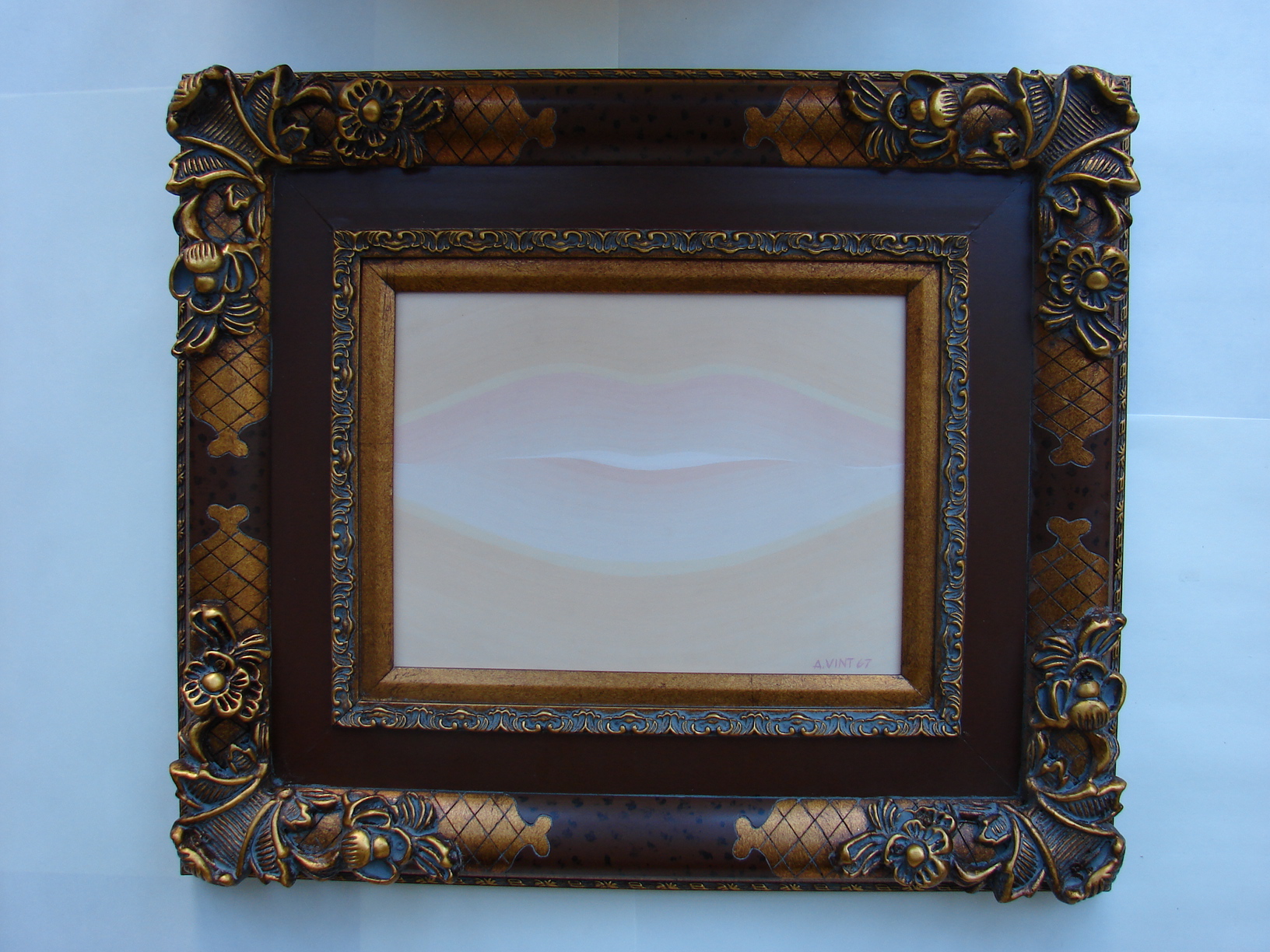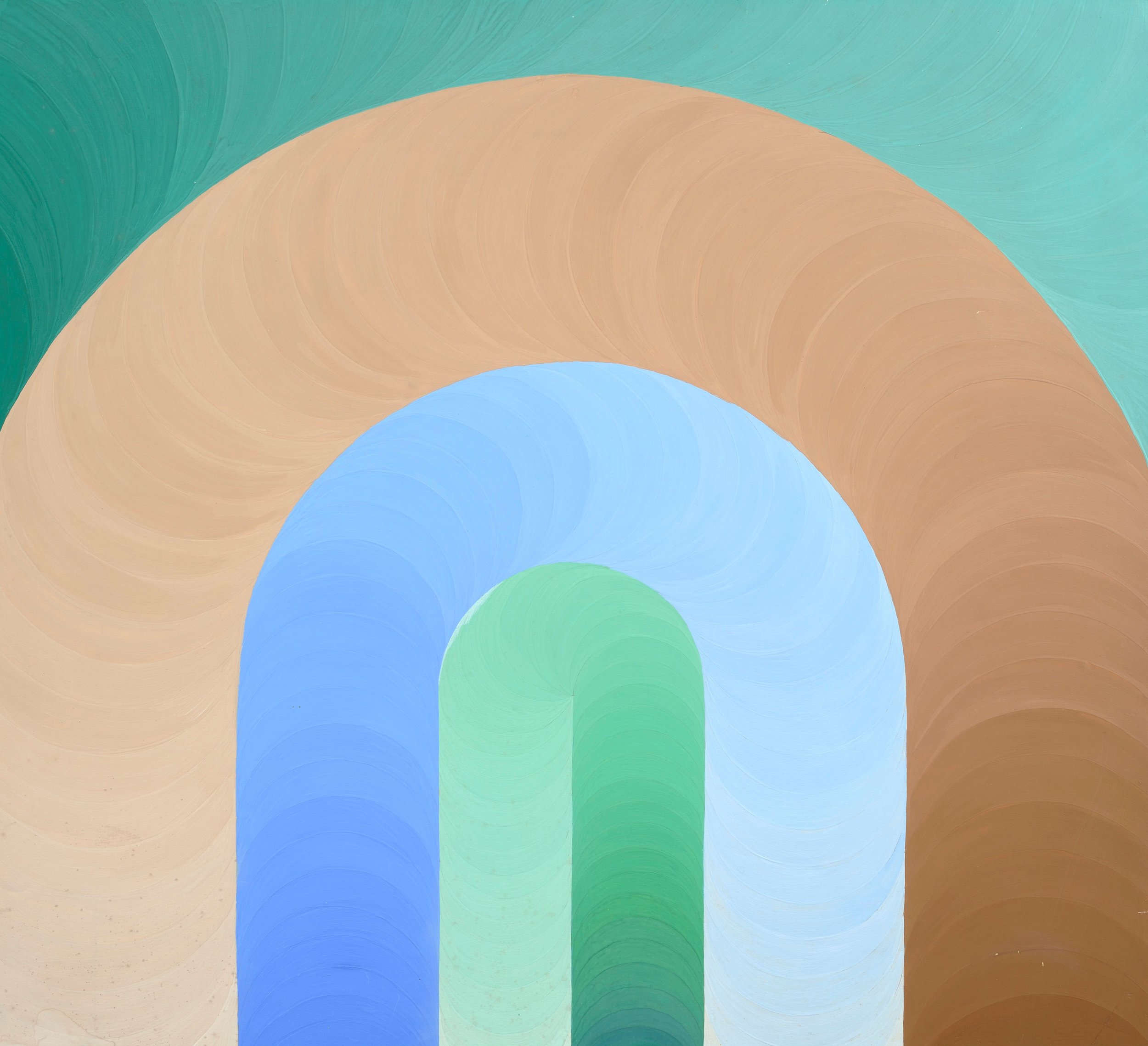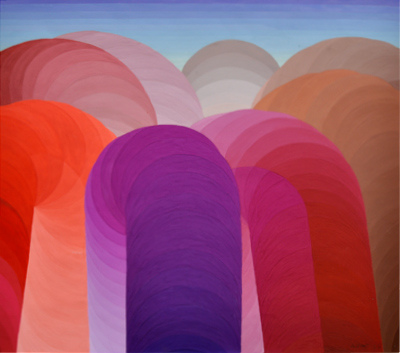Estonian Art Critic Sirje Helme had written in the book POPKUNST FOREVER. Estonian Pop Art at the turn of the 1960s-1970s):
Aili Vint’s colourful gouaches consciously relate to the Pop Art world, but not only; these works, painted by an artist who has an amazing sense of colour, are on the borderline of Op Art. In Aili Vint’s case, technique should be emphasised – the colour gradations that she achieved can only be painted in gouache. For Aili Vint, most of the criteria for defining Pop Art do not apply, but in her lyrical approach she may be connected with the hippie world, even in the poor local conditions. In a way, bohemia and glamour, and bohemia and construction met in her work.
Estonian Art Critics Ants Juske: Soviet Union-Pop did not concentrate on commercial banality, but on the banality which was introduced into Estonian life by the Soviet system.
Aili Vint: CH E E R F U L P O P F O R E V E R ! — It’s just like opening an old bottle of high quality wine. Now, in virtual reality I can do anything better than me. It's my passion today to be again in these Golden Sixties
Now, in virtual reality I can do anything better than me. It's my passion today to be again in these Golden Sixties
1967
my firsts cheerful gouache paintings
JOY 1967 Gouache painting, Tartu Art Museum + CATASTROPHE 1967 Gouache painting 75 x 63 cm, artist collection
1964
ANK '64 - THESE GOLDEN SIXTIES!
The ANK group was formed in 1964. under the aegis of the Student Scientific Society (ÜTÜ) of the State
Art Institute of the Estonian SSR.
How can we talk about the ÜTÜ? Was it an alternative institute, an institution dètourned by the students, where official curricula were supplemented with new know ledge of a different kind? Or was it a part of the mechanisms of power, of its expansion and reproduction because the infrastructure used was created by the power?
Estonian Art Critic Boris Bernstein: ANK '64 - AN ARTISTIC PHENOMENAN. The tradition of ANK '64 can be regarded archaic, presuming that this is not „in“ in the intellectual world. Still, it seems to me that the values still preserved by the masters who once formed the first organically born artistic group amidst the deadly structured plasma of soviet artistic life,- these values have worth still, even at the end of the century.
1962 -1972
ink + watercolor paintings and gouache paintings
1967 - 1972
gouache paintings
THE STORY OF MY DESTINY
Aili Vint: In the beginning of my career as an artist I loved picking vibrant colors, comparing their lightness-darkness and boldly transferring them to the paper without much awareness of where this came from. This resulted in op-art, which was innovative at the time. Years later I learned that there is an acclaimed artist named Ay-O in Japan, who uses the same kind of striped gradient motifs in his paintings. He was already famous at that time and I might have been pegged as a plagiarist: Someone named “Ay-Li “ does the same thing as the Japanese Ay-O! I abruptly gave up the style I had invented, despite the fact that it held a lot of promise for developmen. It was a pity, of course, but I actually enjoyed this unexpected turn in my work, which gave me the opportunity to start painting the Sea instead, something that I had already dreamt of as a child.
SUNSET 1969 Gcouache painting 75 x 63 cm Kumu Art Museum
GLIMMERING WATER 2000 Oil on canvas 92 x 115 cm, artist’s collection
continue:
powered by Squarespace


